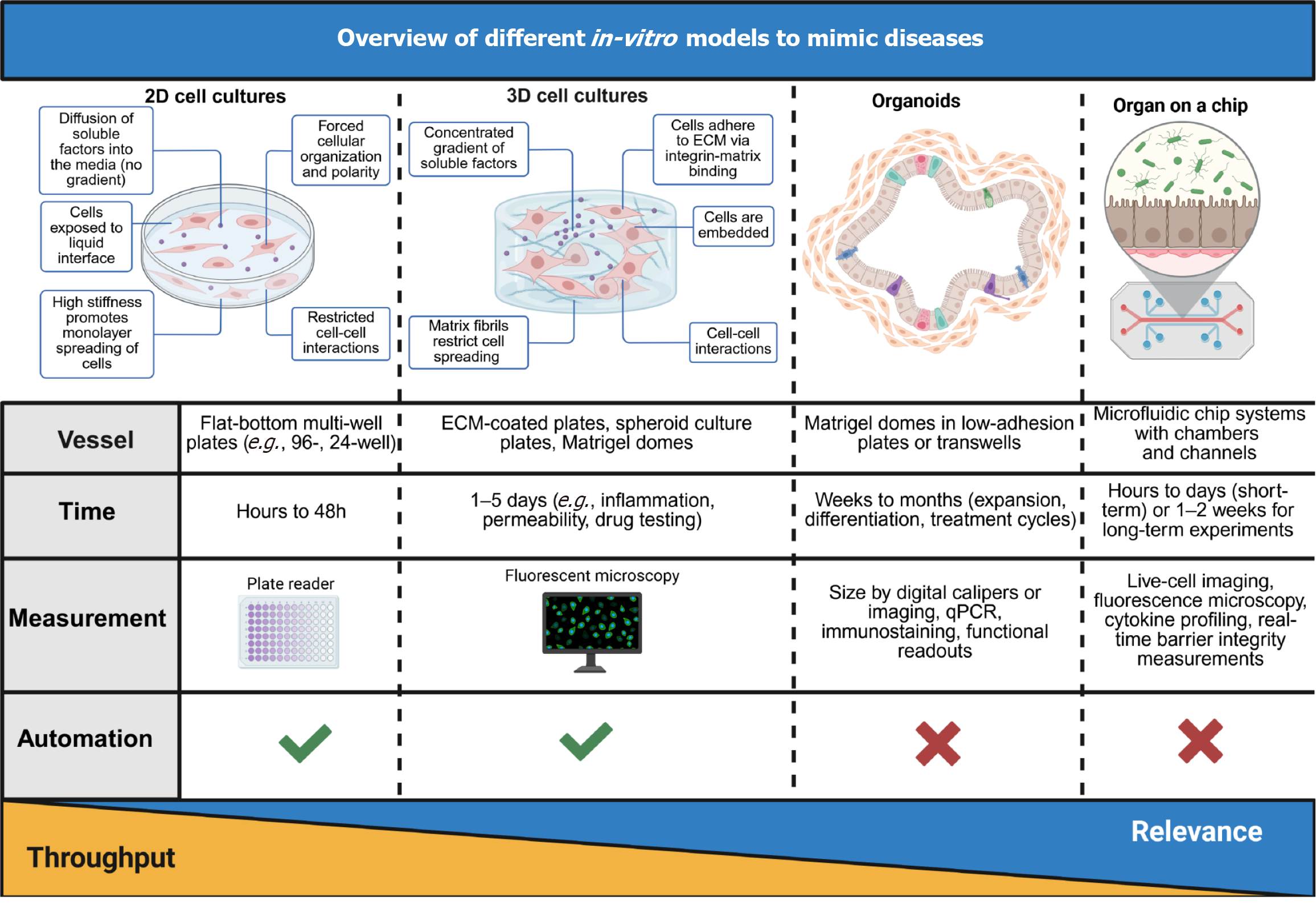Copyright
©The Author(s) 2025.
World J Gastroenterol. Jul 28, 2025; 31(28): 108297
Published online Jul 28, 2025. doi: 10.3748/wjg.v31.i28.108297
Published online Jul 28, 2025. doi: 10.3748/wjg.v31.i28.108297
Figure 7 Overview of different in-vitro models to mimic diseases.
Four widely used in-vitro platforms (two-dimensional cell cultures, three-dimensional cell cultures, organoids, and organ-on-a-chip systems) are being compared based on their structural characteristics, vessel types, experimental duration, measurement techniques, and automation potential. The key features of each system are presented and the gradient bar at the bottom indicates the trade-off between throughput (highest in two-dimensional cultures) and physiological relevance (highest in organ-on-a-chip models). These in-vitro platforms vary in their ability to replicate tissue-specific microenvironments and are selected based on the desired biological complexity, readout needs, and disease modeling objectives. 2D: Two-dimensional; 3D: Three-dimensional.
- Citation: Skok K, Vihar B, Maver U, Gradišnik L, Bräutigam K, Trapecar M, Skok P. Gastrointestinal tract, its pathophysiology and in-vitro models: A “quick” reference guide to translational studies. World J Gastroenterol 2025; 31(28): 108297
- URL: https://www.wjgnet.com/1007-9327/full/v31/i28/108297.htm
- DOI: https://dx.doi.org/10.3748/wjg.v31.i28.108297









